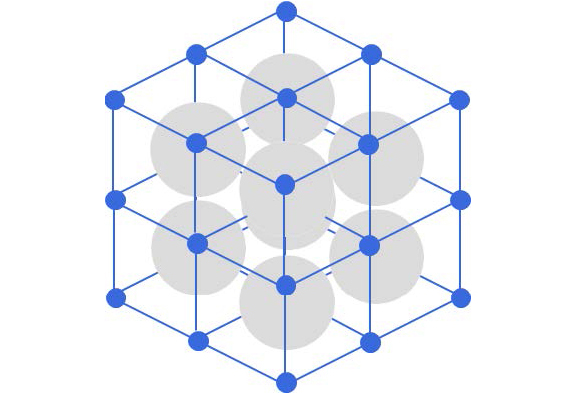
Research
Innovation of materials is essential to realize a society with sustainable energy and to reduce greenhouse gas emissions. As key materials contributing to the realization of such a society, our group is developing new materials and new functionalization methods for inorganic layered materials, and nanoporous metal complexes so called metal-organic frameworks (MOFs). Our goal is to become “nano-level architects” who design and assemble parts at atomic and molecular scales to create new materials, similar to the architecture of the houses we are familiar with in our daily lives.
Creation in nanospaces

It is known that nanometer-sized spaces exhibit considerably different properties from the size space wherein we live. In response to the uniqueness of these nanospaces, in our laboratory, we use nanospace materials, such as inorganic layered materials and nanoporous metal complexes, to perform research on the creation of new materials and molecules that utilize the nanospaces and on their functions and applications. We aim to create unknown materials and molecules in nanospaces by stabilizing and immobilizing molecular species that cannot exist stably in ordinary space.
Confinement synthesis in nanospaces

By utilizing the structural constraints of nanospaces, it is possible to synthesize structure-controlled materials; these materials are expected to express functions based on dimensionality. In particular, two-dimensional (2D) nanosheets exhibit specific adsorption, catalytic, and electronic properties owing to their anisotropy and higher surface area compared with the original bulk (3D material). We also focus on these 2D nanosheets in relation to conducting research on constructing novel structure control methods and their applications.
Catalytic conversion in nanospaces

The development of new solid catalysts is the key to solve environmental and energy problems. Conventionally, precious metals and rare metals are widely used as catalysts. From the viewpoint of resource constraints and costs, the replacement of such catalysts by catalysts comprising abundant elements can make a considerable contribution to the realization of a sustainable energy society. In our laboratory, we focus on developing eco-friendly material-conversion nanospace materials by precisely controlling the nanospace size, structure, surface properties, and catalytically active sites of molecular catalysts.
